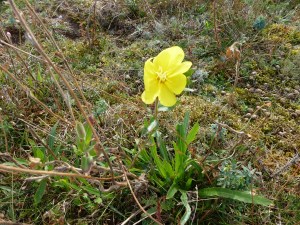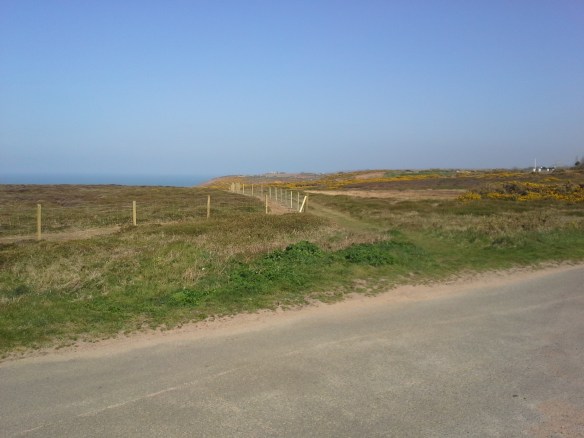 By Cassie Horton with Dru Burdon and Dom Wormell
By Cassie Horton with Dru Burdon and Dom Wormell
A meeting was held last August last year at the request of Dru Burdon from the Jersey Hedgehog Preservation Group as she was so frustrated and upset at the number of hedgehogs coming in with severe injuries. That meeting was attended by about 20 individuals/environmental organisations together with the Natural Environment Department, the Comité des Connétables and the Jersey Farmers’ Union to revise the branchage practice for the benefit of the Island’s fauna and flora. It was proposed that a small committee be formed to identify how we could improve the situation and myself together with Bob Tompkins, Neil Singleton, Alli Caldeira, Dru Burdon, Rose Anne Mitchell and Chris Perkins put our hands up! We are by no means experts in land management but we have endeavoured to seek advice and input from those in the know. Over recent months we have rewritten the branchage guidelines and hope that the revised version will be easier to understand with clear examples of photos and a diagram of best practice.
A training session was organised on 30 May and hosted by Peter le Maistre, the President of the Jersey Farmers’ Union attended by about 50 farmers and contractors, representatives of environmental organisations and John Pinel, Principal Ecologist and Assistant Director of the Natural Environment Department. It was a very successful event with honest and constructive dialogue between all concerned. One of the farmers stated that this was the first time environmentalists and farmers had come together to discuss these issues and this process should continue as it had been incredibly helpful and positive. He also suggested that results of wildlife monitoring (as a result of the new branchage regime) should be reported back to the farmers.

Peter Le Maistre and Ian Le Brun (Jersey Royal Potato Company) had earlier that week cut three examples of branchaging to demonstrate to those present and provide an opportunity for discussion and a compromise was agreed whereby the lower part of the banque is cut to a minimum height of 10cm but the top is left uncut, as this will give wildlife a chance of survival but still adhere to the branchage law. Revised guidelines on best practice for hedgerow, tree and banque (bank) management have now been agreed and will be published by Natural Environment.

Alastair Christie, the Asian Hornet Coordinator also gave a presentation on signs to look out for when undertaking the branchage process and safe working practices.
Our farmers have a symbiotic relationship with the landscape and the large majority of them (particularly those present at the meeting) consider themselves every bit as much an environmentalist. The planting of trees and hedgerows by farmers over the years has contributed to the health of our countryside and they are supportive of improving the biodiversity of our banques and hedgerows.
The Branchage Law dates back to 1914 when the aim was to improve the safety for road users and pedestrians. This is still the case today, however, a misunderstanding/misinterpretation of the law has been allowed to happen and this idea of a ‘neat and tidy’ landscape needs to be done away with. The law is very specific and, as long as a height of 3.7 metres above roads and 2.4 metres above footpaths is adhered to, then the Connétables are happy with this. The banques do not need to be cut down to the bare soil and, as long as vegetation does not overhang the road/footpaths, then the tops can be left uncut. This will allow the desired vegetation to seed but, more importantly, the protection of animals such as hedgehogs, lizards, slow worms and fledgling birds.
Work needs to continue in making private landowners and landlords aware of the new guidelines. Some tenant farmers have been told they risk having fields taken away from them if they don’t make everything ‘neat and tidy’ and it is disheartening when they adhere to the LEAF (Linking Environment & Farming) guidelines and only cut hedges every two years to then find that neighbours cut everything to the bare soil. John Pinel advised that there is legislation in place to prevent the removal of hedges and he offered support to the farmers in generating positive discussions with landowners regarding best working practices.
One of the issues mentioned at an earlier discussion was that machine operators often suffer abuse from motorists when holding up the traffic and also from home owners if the operators go out early in the morning to avoid the motorists. We sought advice from the Connétables who were present at the meeting and Len Norman advised that the Connétables were willing to close the roads to enable the branchage to be undertaken safely. It’s not easy operating machinery, trying to check where the flail is along the banque and at the same time looking out for motorists, pedestrians and cyclists so, if the level of stress can be reduced, that can only be a good thing.
I was delighted with the outcome of the meeting and, having been involved in this campaign, I have a much deeper understanding and respect for the work that our farmers do.
We have produced two sets of guidelines – a condensed version (which could be kept in the cab of a vehicle to refer to – download this version here) and the more comprehensive version which is still to be formalised by the Natural Environment Department with photos and diagrams (download the draft of this here). Polish and Portuguese versions of the condensed report are available – please check relevant websites or contact Birds On The Edge.
The intention is to distribute these guidelines to private contractors and have them available on Parish and Government of Jersey websites for Island wide use.
Download:
Banque, hedgerow and tree management guidelines on best practice. Draft May 2019
Banque, hedgerow and tree management guidelines on best practice. Condensed version.- May 2019

 By Cris Sellarés
By Cris Sellarés


 By Jon Parkes
By Jon Parkes 





 Resent soil tests have confirmed that pH levels are still rather alkaline at between pH 8.5 and 8.9 and this is unlikely to change without any intervention due to the amount of concrete based material that must be underneath the layer of imported calcareous sand. Perhaps more encouraging is the nutrient status results from the same soil samples. For example, the amount of available phosphorus is currently between 8.8 and 25.8 mg/l with a “P index” of 0-3, compared to a recently tested former agricultural field which showed levels of available phosphorus at between 66.2 and 153.4mg/l giving a “P index” of between 4 and 7.
Resent soil tests have confirmed that pH levels are still rather alkaline at between pH 8.5 and 8.9 and this is unlikely to change without any intervention due to the amount of concrete based material that must be underneath the layer of imported calcareous sand. Perhaps more encouraging is the nutrient status results from the same soil samples. For example, the amount of available phosphorus is currently between 8.8 and 25.8 mg/l with a “P index” of 0-3, compared to a recently tested former agricultural field which showed levels of available phosphorus at between 66.2 and 153.4mg/l giving a “P index” of between 4 and 7. Our current situation, with the encouraging results of vegetation surveys, indicates that the soil choice was a good one. Whilst our soil pH is much higher than we would have ideally liked, this is something that can be changed by adding sulphur, an expensive but affective way of raising acidity. As the results from the former agricultural field’s shows, high soil fertility is much more of a problem with no “magic cure”.
Our current situation, with the encouraging results of vegetation surveys, indicates that the soil choice was a good one. Whilst our soil pH is much higher than we would have ideally liked, this is something that can be changed by adding sulphur, an expensive but affective way of raising acidity. As the results from the former agricultural field’s shows, high soil fertility is much more of a problem with no “magic cure”.



 Peter Blake, President of the Vales Commons Council said “Myself and my committee wish you and the herd a great stay on the Common and hope that this will encourage more of the inhabitants to do the same.”
Peter Blake, President of the Vales Commons Council said “Myself and my committee wish you and the herd a great stay on the Common and hope that this will encourage more of the inhabitants to do the same.”
 By Cris Sellarés
By Cris Sellarés
 Farmland birds are in decline across Europe, the UK and Jersey, with some species having become locally extinct and many others considered threatened. One of main reasons of these declines is lack of food during winter which causes high levels of mortality. The so-called ‘Winter Bird Crops’ provide a source of food at this critical time, increasing the chances of survival of many threatened birds both local and migrants
Farmland birds are in decline across Europe, the UK and Jersey, with some species having become locally extinct and many others considered threatened. One of main reasons of these declines is lack of food during winter which causes high levels of mortality. The so-called ‘Winter Bird Crops’ provide a source of food at this critical time, increasing the chances of survival of many threatened birds both local and migrants






































